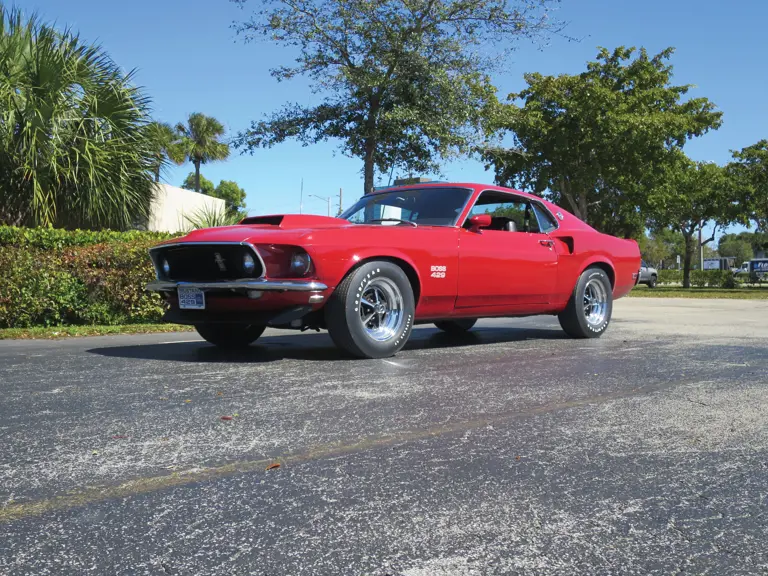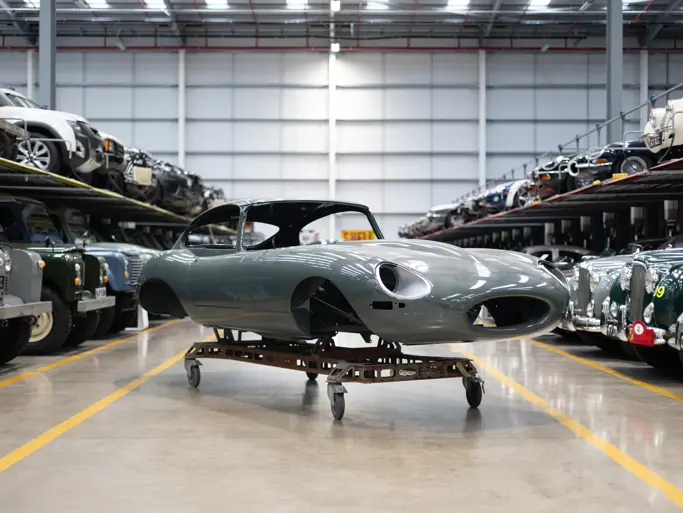During the mid-1960s, the non-competition pact adopted by the Big Three nearly a decade earlier had fallen to shreds, with increasingly open factory-based support provided to supposedly independent racers. Ford, in particular, faced stiff competition from Chrysler in NASCAR competition. The Blue Oval camp required a new engine, but NASCAR rules demanded that at least 500 similar cars be built and made available to the public.
Ford developed a new 429-cubic inch V-8 with all-new, free-flowing cylinder heads, an aluminum high-rise intake manifold, a 735-cfm Holley carburetor, 11.0:1 compression, header-style exhaust manifolds, and a beefy four-bolt main block, conservatively rated at 375 horsepower.
When dropped into the Mustang, it created the Boss 429, a pony car with abundant muscle. To handle the power, the stout “Toploader” four-speed manual transmission and a 3.91:1 Traction-Lok rear axle were mandatory options. Other features included an engine oil cooler, a trunk-mounted battery, a competition suspension with front and rear anti-roll bars, power front disc brakes, and fat F60x15 tires. The production process required numerous modifications to accommodate the new engine, including cutting and relocating the shock towers. To alleviate the in-house production burden, Ford had the cars converted at Kar Kraft, of Brighton, Michigan. At $4,087, the Boss 429 was the priciest non-Shelby Mustang to date, and it was available in very limited numbers, with fewer than 900 produced for the 1969 model year.
The Boss Mustang offered here is a rare preservation example having never required restoration and exhibiting what is believed to be all original paintwork and interior. Finished in its original color of Candy Apple red, it is complimented with black clarion knit vinyl high back seats and simulated wooden paneling. The Boss exhibits a patina that is commensurate with its overall unrestored condition and largely indicative of a car of its age.
As one of the first 279 Boss 429 models built, this example has the “S” engine with the 1/2-inch connecting rod bolts that are demonstrated within the photographic documentation that accompanies the car in its sale. Additionally it is has a Deluxe Marti Report as well as additional support of the Kar Kraft number, engine stamping, and detailed photos of all important part numbers providing the means to further authenticate this Boss 302.
While the Boss 429 appears largely understated, it still is one of the most unique Mustangs ever made. Ford lost money on every car due to the difficulty of fitting of what made the car both truly rare and unique, the 429 power plant. A rare opportunity is given to own a piece of automotive legend as it rests unchanged from how it was originally conceived.



 | Fort Lauderdale, Florida
| Fort Lauderdale, Florida


